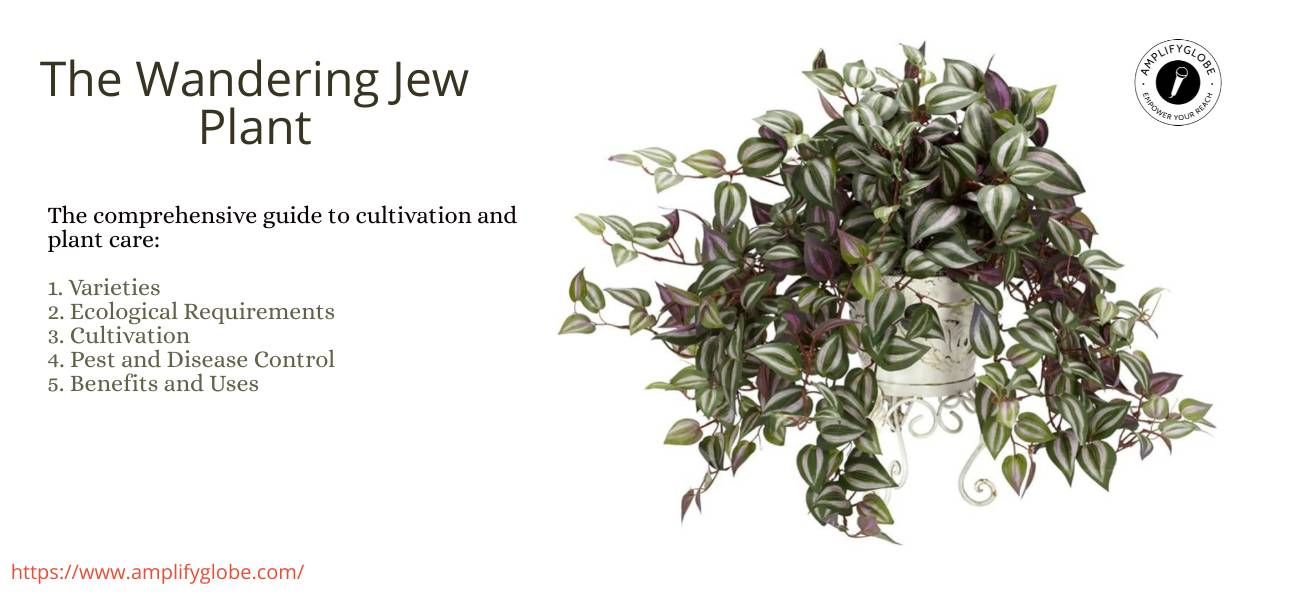
Wandering Jew Plant
The Wandering Jew plant, scientifically known as Tradescantia zebrina, is a captivating and resilient houseplant that has become a favorite among indoor gardening enthusiasts. Characterized by its vibrant, trailing vines adorned with striking purple and green leaves, this plant adds a touch of elegance to any space.
Taxonomy
Belonging to the Commelinaceae family, the Wandering Jew plant is a member of the Tradescantia genus. Its botanical name, Tradescantia zebrina, pays homage to the English botanists John Tradescant the Elder and Younger, who were renowned plant collectors in the 17th century.
Types of Wandering Jew Plant
Several varieties of Wandering Jew plants exist, each possessing its unique charm. Some popular types include:
Tradescantia zebrina: Recognizable by its zebra-like striped leaves.
Tradescantia pallida: Known for its deep purple foliage.
Tradescantia fluminensis: Featuring solid green leaves with a hint of purple.
Ecological Requirements of Wandering Jew Plant
1. Light
The Wandering Jew plant thrives in bright, indirect light. However, it can adapt to lower light conditions, making it suitable for various indoor environments.
2. Watering
Maintain consistently moist soil, allowing the top inch to dry between waterings. Avoid waterlogged conditions, as they can lead to root rot.
3. Temperature and Humidity
This plant prefers moderate temperatures between 65-75°F (18-24°C) and appreciates higher humidity levels. Regular misting can be beneficial, especially in drier climates.
How to Plant Wandering Jew Plant
1. Selecting a Pot
Choose a well-draining pot with ample drainage holes to prevent waterlogging.
2. Soil Mix
Use a lightweight potting mix rich in organic matter. A mix formulated for tropical plants works well.
3. Planting
Place cuttings or small plants in the pot, burying the nodes in the soil. Water thoroughly after planting.
4. Placement
Position the pot in a location with bright, indirect light.
Pests and Diseases
Pests
Common pests include spider mites and aphids. Regularly inspect the leaves and treat with insecticidal soap if needed.
Diseases
Overwatering can lead to fungal diseases. Ensure proper drainage and allow the soil to partially dry between waterings to prevent such issues.
Uses of Wandering Jew Plant
he Wandering Jew plant, beyond its aesthetic appeal, has various uses:
Indoor Decor
The plant's trailing nature makes it an ideal choice for hanging baskets or as a ground cover in larger pots.
Air Purification
Wandering Jew plants contribute to indoor air quality by filtering pollutants and adding oxygen.
Aesthetic Complement
It complements other houseplants, creating visually appealing arrangements.
Discover more on AmplifyGlobe
You might want to explore the beauty of cultural diversity and enrich your understanding of the world! Learning about different cultures is an enriching journey that broadens our perspectives, fosters empathy, and fosters respect for one another. It allows us to appreciate the unique traditions, values, and customs that shape the identity of various communities around the globe. Learn about the afar people, the garifuna, the san, the dogon, the maasai of kenya, the Hamer Tribe, the Hadza Tribe, the Sami, the Akha People, the Aymaraes, the Kazakh People and the Adivasi on AmplifyGlobe.